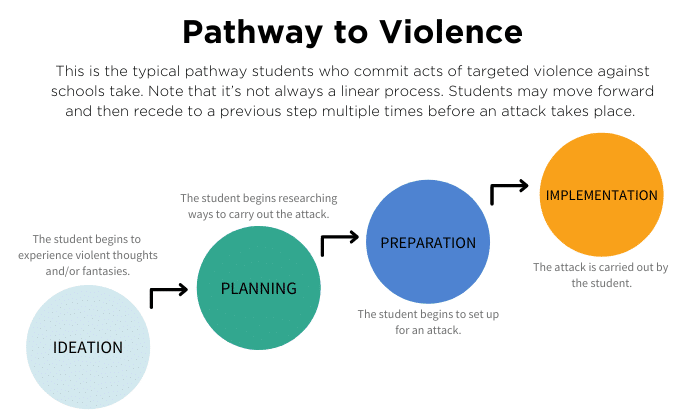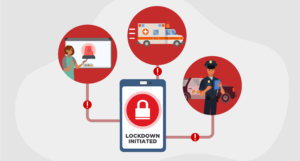Listen to this blog (2 mins)
“For the most part, the folks that are going to commit catastrophic events at schools work their way up what is called a pathway to violence,” says Chief Frank Kitzerow, President of the National Association of School and Campus Police Chiefs. Most targeted acts of violence begin with a grievance, but not everyone who has a grievance will continue down the pathway of violence.
The graphic below illustrates the typical pathway students who commit acts of targeted violence against schools take.

Ideation
Ideation is when the person rationalizes that violence is the acceptable solution to their problem or grievance. They may start showing signs of crisis and behavior changes. They may also directly express their ideas or plans.
Planning
The student starts to think through the details. They’ll consider who they’re going to attack, when and where it’ll happen, how they’ll get weapon(s), and how they will ultimately commit the act of violence.
Preparation
The student begins to acquire the weapon(s) and other tools or materials needed to carry out their plan. They may ask students or family if they have weapons or if they can store weapons for them. They may also begin to test school security processes, like seeing if they can sneak past cameras.
Implementation
The student commits the act of violence.
Early Identification is Key and Potentially Life Saving
The student can escalate quickly up this pathway to violence. Schools must keep an eye out for red flags and be ready to move fast. Early identification is key to getting the student mental health support, resolving the grievance before it potentially escalates, determining the threat, and keeping the entire school safe. Consistent monitoring and understanding who is on the pathway to violence are two of the tenants of threat assessment.
Learn More
Schools must act fast to get ahead of and prevent violent incidents. Early behavioral threat assessment can empower schools to do just that. Download our Guide to K-12 Student Wellbeing or contact us today to learn more.



